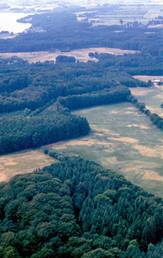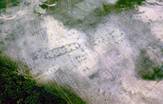- Steering group and management
- Sub-projects
- Jelling in GIS (Geographic Information System)
- Geophysical survey at Jelling
- Fieldwork 2011
- Archaeological fieldwork 2010
- Archaeological fieldwork 2009
- Jelling’s large stones
- The landscape around Jelling
- Place names in Jelling and its vicinity
- The bridge over Ravning Enge
- The travertine churches of East Jutland.
- Rune stones in context 2011
- Power and coins 2009
- Exhibitions
- Digitizing the photographs
The landscape around Jelling
The Iron Age and Viking Age in Jelling and the surrounding area 2009-10
Jelling is one of the central locations of the Viking Age. However, researchers have long been limited in inspiration for describing the Viking Age here. Until a few decades ago, apart from those from the monument complex itself, no archaeological finds from the Viking Age had been recorded from the Jelling area. Overall, the Viking period is not especially well represented in this part of eastern Jutland. Grave finds are scarce, as are treasure hoards. The gold ring, which the mythical king Frode Fredegod hung up on Jelling Heath to symbolise the secure state of the kingdom, is yet to find a counterpart in a hoard from Jelling.
In 1986 excavations associated with new building work immediately south of Jelling revealed evidence of a farm building and an associated well-furnished grave from the Early Iron Age. These finds led to a decision to carry out archaeological trial excavations prior to all building projects within the municipality of Jelling. Today a picture can be painted of a continuous settlement in, and around, Jelling from the time around the Birth of Christ up until the earliest phase of the Viking Age monuments.
Jelling has without doubt been of more than just local significance. The purpose of this project is by plotting the previous (Iron Age) and contemporary settlement, finds and features, including those outside Jelling parish, to shed light upon the regional basis behind the establishment of the Jelling complex. The main area of investigation will consist of Tørrild district and the nearest parishes to the south and north, whilst the chronological limits extend from the early Iron Age to the Viking Age/early medieval period. The longest time spam will be in Jelling’s closest surroundings, where the individual localities will be treated more thoroughly.
Project coordinator: Museum Inspector Folmer Christiansen, Vejle Museum.



